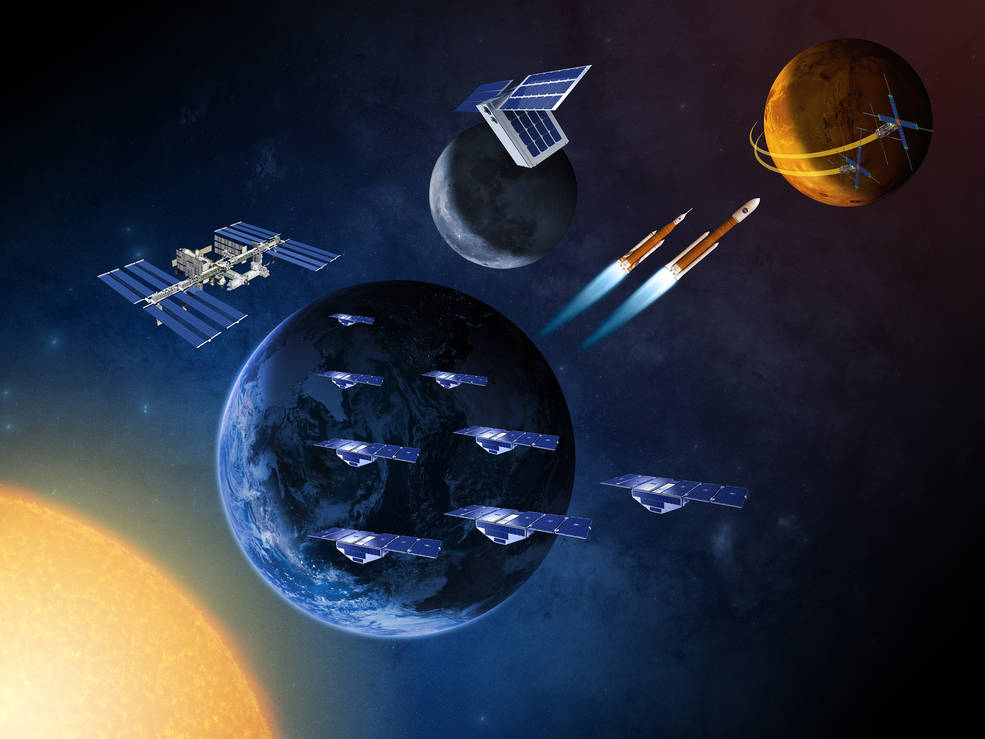

NASA will host a teleconference at 2:30 p.m. EST Monday, Nov. 7, to preview several Earth science missions using small satellites heading into space, starting this year, to help us better understand our home planet.
NASA has embraced the revolution in small spacecraft and satellites, from CubeSats you can hold in your hand to microsatellites the size of a small washing machine. The technology helps advance scientific and human exploration, reduces the cost of new missions, and expands access to space. The briefing will discuss NASA’s overall program, technology development initiatives, and new Earth-observing missions that use individual and constellations of small satellites to study climate change, hurricanes and clouds.
Participants in the teleconference will be:
- Ellen Stofan, chief scientist at NASA Headquarters in Washington
- Thomas Zurbuchen, associate administrator for the Science Mission Directorate at NASA Headquarters
- Steve Jurczyk, associate administrator for Space Technology Mission Directorate at NASA Headquarters
- Michael Freilich, director of the Earth Science Division at NASA Headquarters
- Aaron Ridley, mission constellation scientist for NASA’s Cyclone Global Navigation Satellite System (CYGNSS) at the University of Michigan in Ann Arbor
- Bill Swartz, CubeSat principal investigator for the Radiometer Assessment using Vertically Aligned Nanotubes (RAVAN) project at Johns Hopkins University Applied Physics Laboratory in Laurel, Maryland
- William Blackwell, principal investigator for the Time-Resolved Observations of Precipitation structure and storm Intensity with a Constellation of Smallsats (TROPICS) mission at the Massachusetts Institute of Technology Lincoln Laboratory in Lexington
To participate by phone, media must contact Sean Potter at 202-358-1536 or [email protected] and provide their affiliation no later than 12 p.m. Monday. Media and the public may ask questions via social media with #askNASA.
[Source:-NASA]
